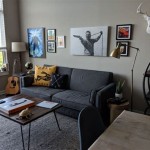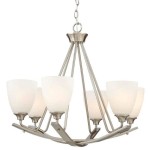How To Decorate Rustic Style: A Comprehensive Guide
Rustic style, in interior design, evokes a sense of warmth, comfort, and connection to the natural world. It emphasizes the use of raw, unfinished materials, handcrafted elements, and a generally unpretentious aesthetic. The goal is to create a space that feels lived-in, inviting, and reflective of a simpler time. Successfully implementing a rustic design requires careful consideration of materials, color palettes, furniture choices, and decorative accents. This article provides a detailed exploration of the key elements involved in achieving a cohesive and authentic rustic interior.
Material Selection: Embracing the Natural World
The cornerstone of rustic design lies in the selection and integration of natural materials. These materials not only contribute to the visual appeal but also infuse the space with tactile qualities that are characteristic of the style.
Wood: Wood is arguably the most important material in rustic design. It should be used extensively, both structurally and decoratively. Look for reclaimed wood, rough-hewn beams, and naturally textured planks. Different types of wood can be incorporated to add depth and visual interest. Consider using pine for its light and airy feel, oak for its durability and classic appeal, or walnut for its rich and luxurious tones. The wood can be left unfinished or lightly stained to showcase its natural grain and imperfections. Exposed wooden beams on ceilings are a quintessential element of rustic interiors, adding a sense of architectural grandeur and historical authenticity. Wooden flooring, whether wide-plank or patterned, provides a warm and grounding foundation for the room. Consider incorporating wooden furniture pieces, such as dining tables, chairs, and benches, that feature sturdy construction and a weathered appearance.
Stone: Stone elements contribute to the rustic aesthetic by introducing a sense of permanence, strength, and connection to the earth. Stone fireplaces are a focal point in many rustic living rooms, providing both warmth and visual drama. The use of natural stone, such as river rock or fieldstone, enhances the authentic feel. Stone walls, whether fully constructed or partially exposed, add texture and character to the space. Consider using stone as a backsplash in kitchens or bathrooms, creating a durable and visually appealing surface. Smaller stone accents, such as decorative bowls or pedestals, can be incorporated to add subtle touches of rustic charm.
Metal: While wood and stone are dominant, metal accents play an important role in adding contrast and visual interest to rustic interiors. Wrought iron is a popular choice, often used for lighting fixtures, fireplace screens, and furniture hardware. The dark, textured finish of wrought iron complements the natural tones of wood and stone. Copper accents, such as pots, pans, and decorative items, can add warmth and a touch of elegance. Galvanized steel, with its utilitarian appeal, can be used for shelving, lighting, and other functional elements. It's important to use metal sparingly, focusing on pieces that complement the overall rustic aesthetic rather than dominating it.
Natural Fibers: Textiles made from natural fibers contribute to the comfortable and inviting atmosphere of rustic interiors. Linen, cotton, wool, and jute are all excellent choices for upholstery, curtains, rugs, and throws. These materials are breathable, durable, and have a natural texture that complements the overall aesthetic. Linen and cotton are often used for bedding and curtains, providing a soft and comfortable feel. Wool is ideal for rugs and throws, adding warmth and texture to the space. Jute rugs are a popular choice for high-traffic areas, offering durability and a natural, earthy appeal. Avoid synthetic fabrics, as they tend to detract from the authentic rustic feel.
Color Palette and Lighting: Creating a Warm and Inviting Atmosphere
The color palette and lighting choices are crucial in establishing the overall mood and ambiance of a rustic interior. A well-chosen color scheme can enhance the sense of warmth, comfort, and connection to nature, while appropriate lighting can create a soft and inviting atmosphere.
Earthy Tones: The foundation of a rustic color palette lies in earthy tones. These colors are inspired by the natural world and evoke a sense of tranquility and groundedness. Browns, beiges, and creams are essential for creating a warm and neutral backdrop. These colors can be used on walls, flooring, and large furniture pieces. Greens, inspired by forests and meadows, can be incorporated as accent colors, adding a touch of freshness and vibrancy. Consider using muted shades of green, such as olive green or sage green, to maintain a sense of subtlety. Warm reds and oranges, reminiscent of sunsets and autumn leaves, can be used to add pops of color and warmth to the space. These colors can be incorporated through accent pillows, throws, and artwork. Avoid bright, saturated colors, as they tend to clash with the natural and understated aesthetic of rustic design.
Natural Lighting: Maximize the use of natural light whenever possible. Large windows and skylights can flood the space with sunlight, creating a bright and airy atmosphere. Consider incorporating sheer curtains or blinds that allow natural light to filter through while maintaining privacy. Avoid heavy drapes that block out natural light. Position furniture to take advantage of natural light sources, creating comfortable reading nooks and inviting seating areas. The interplay of natural light and shadow can enhance the textures and tones of the natural materials used in the space.
Artificial Lighting: Supplement natural light with carefully chosen artificial lighting fixtures. The goal is to create a soft and warm glow that enhances the cozy ambiance of the rustic interior. Avoid harsh fluorescent lighting, opting instead for incandescent or LED bulbs with a warm color temperature. Layer lighting to create depth and interest. Use ambient lighting, such as recessed lights or sconces, to provide general illumination. Task lighting, such as desk lamps or reading lights, should be strategically placed to provide focused light for specific activities. Accent lighting, such as spotlights or picture lights, can be used to highlight architectural features or decorative items. Consider using lighting fixtures made from natural materials, such as wrought iron, copper, or wood, to complement the overall rustic aesthetic.
Fireplace: If possible, incorporate a fireplace. The flickering flames provide a captivating focal point and create a warm and inviting atmosphere. Consider using a wood-burning fireplace for an authentic rustic feel. Ensure that the fireplace is properly ventilated and meets all safety regulations. The fireplace can serve as a source of both heat and light, adding to the overall comfort and ambiance of the space. Decorate the mantel with natural elements, such as candles, pinecones, or branches, to enhance the rustic aesthetic.
Furniture and Decor: Emphasizing Comfort and Functionality
The selection of furniture and decor plays a crucial role in defining the character and functionality of a rustic interior. The focus should be on pieces that are comfortable, durable, and reflect the natural and unpretentious aesthetic of the style.
Comfortable Furniture: Prioritize comfort when selecting furniture. Choose oversized sofas and chairs upholstered in soft, natural fabrics, such as linen, cotton, or wool. Consider incorporating slipcovers for added protection and easy cleaning. Add plenty of pillows and throws to create a cozy and inviting seating area. Opt for furniture with a relaxed and informal design, avoiding overly formal or ornate pieces. The goal is to create a space where people feel comfortable relaxing and spending time together.
Handcrafted Elements: Incorporate handcrafted elements to add a personal touch and enhance the sense of authenticity. Look for furniture pieces made by local artisans or craftspeople. Consider incorporating handmade textiles, pottery, or artwork. These items add character and uniqueness to the space, making it feel more personal and lived-in. The imperfections and irregularities inherent in handcrafted items contribute to the overall rustic aesthetic, adding a sense of charm and history.
Vintage and Antique Finds: Integrate vintage and antique finds to add character and depth to the space. Flea markets, antique stores, and estate sales are excellent sources for unique and interesting items. Look for furniture pieces with a weathered patina or signs of age. Consider incorporating vintage lighting fixtures, mirrors, or artwork. These items add a sense of history and personality to the space, making it feel more authentic and inviting. Be mindful of scale and proportion when incorporating vintage and antique finds, ensuring they complement the overall design scheme.
Natural Accents: Incorporate natural accents to bring the outdoors in. Display potted plants, branches, or flowers in rustic containers. Consider using natural materials, such as pinecones, stones, or shells, as decorative elements. Arrange these items in groups or clusters to create visually appealing vignettes. The goal is to connect the interior space with the natural world, reinforcing the overall rustic aesthetic. Avoid overly polished or refined decorative items, opting instead for pieces that have a natural and unpretentious appeal.
Storage Solutions: Choose storage solutions that are both functional and aesthetically pleasing. Consider using wooden crates, baskets, or trunks to store blankets, pillows, or other items. These items add a rustic touch while providing practical storage solutions. Shelving units made from reclaimed wood or metal can be used to display books, pottery, or other decorative items. The goal is to keep the space organized and clutter-free while maintaining the overall rustic aesthetic.
By carefully considering these elements – material selection, color palette and lighting, and furniture and decor – it's possible to create a rustic interior that is both beautiful and functional, offering a warm and inviting sanctuary that reflects the natural world and a simpler way of life.

Rustic Interior Design How To Get A No Fuss Natural Look Decorilla

48 Rustic Living Room Ideas For A Cozy Inviting Family Space

32 Best Rustic Interior Design Ideas In 2025 Decorilla

Embrace Natural 24 Rustic Living Room Decor Ideas Rugs Direct

48 Rustic Living Room Ideas For A Cozy Inviting Family Space

Rustic Interior Design How To Get A No Fuss Natural Look Decorilla

30 Rustic Living Room Ideas For A Cozy Organic Home Decoist

Rustic Decor Ideas Tips Spiffy Spools

100 Rustic Farmhouse Decorating Ideas With Country Style Decoration Vintagestyle

48 Rustic Living Room Ideas For A Cozy Inviting Family Space
Related Posts







